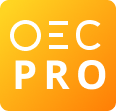Overview This page contains the latest trade data of Woven fabric>85% synthetic nes + cotton, <170g/m2 dye. In 2023, Woven fabric>85% synthetic nes + cotton, <170g/m2 dye were the world's 4053rd most traded product, with a total trade of $101M. Between 2022 and 2023 the exports of Woven fabric>85% synthetic nes + cotton, <170g/m2 dye decreased by -16.2%, from $120M to $101M. Trade in Woven fabric>85% synthetic nes + cotton, <170g/m2 dye represent 0.00045% of total world trade.
Woven fabric>85% synthetic nes + cotton, <170g/m2 dye are a part of Light Synthetic Cotton Fabrics.
Exports In 2023 the top exporters of Woven fabric>85% synthetic nes + cotton, <170g/m2 dye were China ($32.8M), India ($24.7M), Turkey ($12.3M), Guatemala ($3.93M), and Italy ($3.52M).
Imports In 2023 the top importers of Woven fabric>85% synthetic nes + cotton, <170g/m2 dye were Russia ($10.3M), Sri Lanka ($8.81M), Tunisia ($6M), Saudi Arabia ($5.45M), and United Arab Emirates ($4.23M).
Ranking Woven fabric>85% synthetic nes + cotton, <170g/m2 dye ranks 2925th in the Product Complexity Index (PCI).
Description Woven fabric is a fabric consisting of a set of yarns that are woven together. The key to the success of woven fabric is the weave, which is the way the yarns cross each other. There are several types of weaves, but the most common is the plain weave, also known as tabby weave. This type of weave has equal numbers of warp and weft yarns, and the weave is created by crossing the warp and weft yarns over each other, with one set on top of the other. The weft yarns are pulled across the fabric in

